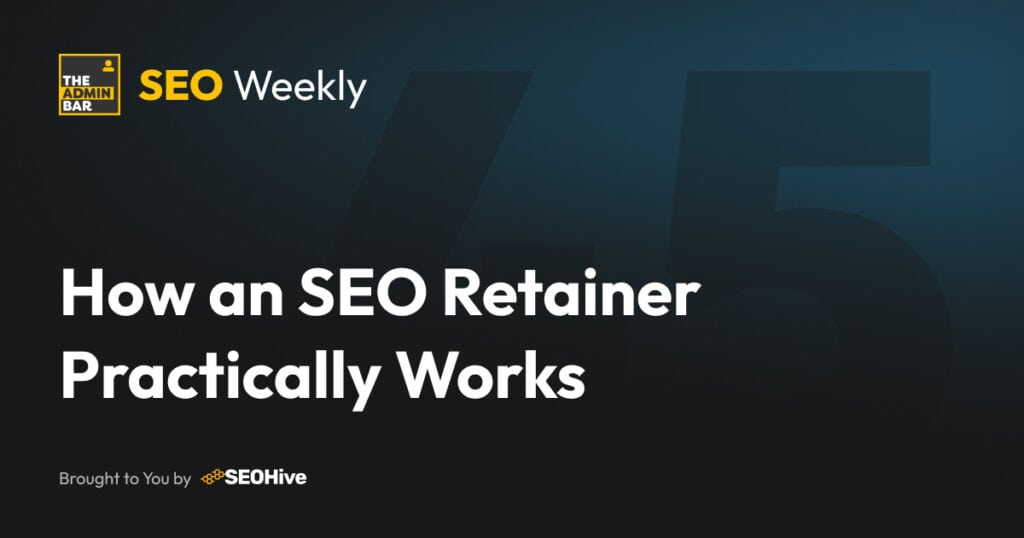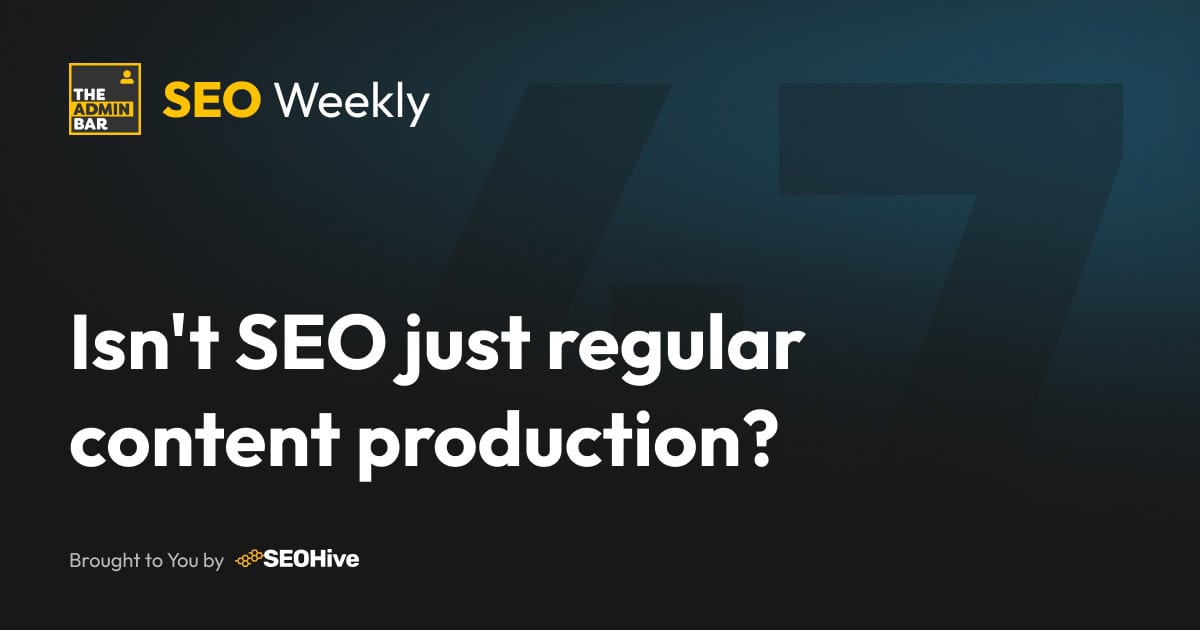I realise we’re all at different stages of our business… Some of us relish the recurring/retainer model, whilst to others this will be new territory. I’m also fully aware that a lot of us will run maintenance plans, and you’ve been reading my ramblings about SEO for almost an entire year, and will be wondering how that fits or extends with your current model…
So, let’s break down what a retainer really involves, the skills required to deliver it, and how you can manage it without burning out or hiring a full in-house SEO team.
The Rhythm of a Retainer
An SEO retainer isn’t a “set and forget” job – it’s a cycle of planning, improving, and measuring that repeats month after month.
A typical month might look something like this:
1️⃣ Review & Report – Check what’s changed. Rankings, traffic, conversions, leads.
2️⃣ Plan & Prioritise – Based on data, decide where the biggest wins might be (fixing technical issues, creating content, optimising existing pages, or a mix of the above).
3️⃣ Implement – Do the work. Write, optimise, tweak, build, test.
4️⃣ Refine & Repeat – Measure the results, learn, and loop back for next month.
This rhythm keeps momentum – and when done consistently, it compounds month on month.
The Key Elements to an SEO Retainer
Each part of an SEO retainer calls for a slightly different skillset. Here’s what typically goes into the mix on a regular basis:
1. Technical SEO
The foundations – crawlability, site speed, redirects, schema, and all the behind-the-scenes details that affect performance. It’s not flashy, but without it, everything else struggles.
Typically this becomes an initial clean-up, monthly monitoring, and then a 4–6 monthly refresh to stay on top of issues.
2. On-Page Optimisation
Titles, meta descriptions, headings, internal links, and content tweaks. It’s about aligning what’s on the page with how people search – and it’s ongoing.
Generally speaking, there’s an element of this to be done each month, either with the release of new content or the optimisation of older content.
3. Content Strategy & Production
This is the fuel for your SEO process. It involves planning topics, researching keywords, and creating content that answers real questions. Blogs, service pages, guides – whatever fits the strategy.
Every month has some aspect of this – and some months, it’s the bulk of what you do.
4. Link Outreach
Still one of the trickiest parts, and a potential time vampire if you don’t know what you’re doing.
Acquiring high-quality links from relevant sites builds authority, but it’s time-consuming, administrative, and requires persistence (and thick skin 🙄).
5. Analytics & Reporting
Numbers are great, but clients want meaning. This is where you translate the data into insights – what’s working, what’s not, and what’s next.
Those three points should also form the structure of your SEO meetings with clients.
When it comes to meetings and calls, you can’t really avoid them… but having a clear structure helps massively.
I generally work to quarterly strategy meetings – these include the full client team, and we’ll talk about things like lead quality and sales performance.
The other two months in the quarter are tactical catch-ups, typically with a marketing manager – “What do we need from them to get content out? Do they need anything from us?”
This pace keeps you on target and keeps business owners engaged in the process (so they never question what you’re doing), while also avoiding micro-management.
Reality Check
Now, if that sounds like a lot – that’s because it is. Running an effective SEO retainer takes time, focus, and multiple disciplines.
Most smaller agencies don’t have a technical SEO, a strategist, a writer, and a link builder all on staff. Often, one person wears several hats – or SEO ends up squeezed in between other projects.
That’s fine at the start, but as retainers grow, the workload and skill gap become obvious. And there’s only so long you can try to do all this on your own.
And then there’s the software – the tools aren’t cheap 😱. Once you have a dozen or so clients and can spread the cost, it’s not so bad, but if you try to pay for everything for your first few clients, you won’t make much profit!
Outsourcing becomes your launchpad 🚀
Logically then, if you can’t do it all, outsourcing to a white-label provider is the obvious next step – and this is exactly why we started SEOHive back in 2020.
As it says on our homepage:
“A simple, transparent, and proactive SEO service that will equip you to sell and deliver SEO contracts. We perform the service-level work for your agency while you build your Monthly Recurring Revenue.”
Rather than hiring or juggling freelancers, you can plug into a system that provides:
✅ Technical audits and fixes
✅ Content strategy and writing
✅ Local SEO services for bricks-and-mortar clients
✅ Clear, client-friendly reporting
You stay in charge of the strategy and client relationship – we handle the specialist tasks that take time, energy, and extra expertise.
That means you can confidently sell SEO retainers, deliver consistent results, and grow that recurring revenue stream without overloading yourself, your processes, or your team.
Still interested?
At this point, some of you might be thinking “Surely it’s not worth the effort?” – but one thing we haven’t touched on is the volatility of project work and that familiar feast-or-famine cycle.
Retainers give you stability, predictable income, and the foundations to build a business with tangible value (if that’s something that matters to you).
Of course, it’s also important to remember that a successful SEO retainer is a marathon, not a sprint. It’s built on steady effort, regular review, and teamwork – exactly what we’ve outlined above.
The key is knowing which parts to own, which to outsource, and where your time adds the most value.
Start small, stay consistent, and when you’re ready to scale – know that you don’t have to do it all yourself.
Join the Conversation!
There's a dedicated thread on this post inside of The Admin Bar community. Join in on the conversation, ask questions, and learn more!
Group Thread





